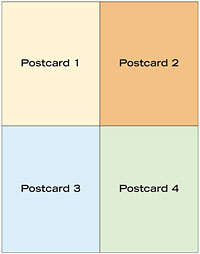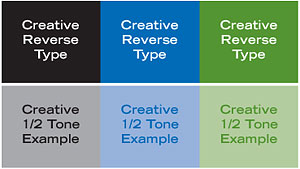
Often when the bill comes, it feels like you are carrying the whole $90 billion industry by yourself. There are, however, ways to save money on printing, if you know the right questions to ask.
The most important thing to remember if you want to save money on printing is that printing is a production business. Large jobs and long runs are less expensive than short ones, so plan ahead.
The most expensive part of the process is the setup. Once the press is running, your per piece cost goes down with every page you print.
For example: I recently designed a small tri-fold brochure for a client. The printer's quote looked like this:
500 pieces - $450
1,500 pieces - $650
2,500 pieces - $750
This is fairly typical whether you are printing 500 or 5,000 pieces. The more you print, the lower the per piece cost. It was easy for this client to make the decision to print the highest quantity instead of planning a reprint six months later. But what if you really don't need more?

Cutting Costs
Ask aboutgang runs.When you print 1,000 postcards, your printer is actually laying them out on a larger sheet of paper, with possibly four postcards to a page or perhaps eight to a page. (See Figure 1.)When printing is complete, the printer will cut the page and divide the finished project into piles. It doesn't matter to him if the four piles are the same or different, but your savings could be tremendous. Using the gang run format, you can actually create four different cards and print them at the same time.
Look at the potential savings on four batches of 1,000 postcards:
The benefits are obvious, but there is work involved. You must invest time up front to think about your printing needs for the next six months or year, then bring that plan to a meeting with a printer and let him help you look for ways to save money.
Another way to use the gang run is to create a "shell." Letterhead is an example of a shell. With your logo and address at the top, the center is blank so you can run individual letters through your desktop printer one at a time.
This same strategy will work with postcards or newsletters. Working with your printer, design a shell and preprint a one-year supply in color. Then, when you need some, you can either print small quantities on your in-house printer, or have the commercial printer overprint the specific information in black ink. The result - the finished product has a professional, full-color look, for significantly less money.
Creative use of color can also save you money. Black and white doesn't have to be boring. Using reverses and halftones, you can create the illusion that a piece has more than one or two colors. (See Figure 2.) Also, one color doesn't have to be black. Dark blues and dark greens are extremely legible, and much more eye-catching, without being any more expensive.
Talk to your printer about paper. Find out about their "house sheets." These are usually adequate quality for most projects, and because they buy large quantities, your price is lower than for a specialty paper. Sometimes, changing paper grades from 100# to 80# can cut your cost, but you may not be happy with the quality, so always ask for a sample. This is where printers will look to cut cost, so if you are getting multiple bids, make sure you get paper samples.
Client-Printer Relationship
Establish a relationship with one printer, rather than looking for the lowest bid every time. In the long run, this relationship will save you time and money. A printer who knows you are price shopping will quote a low price, with no extras, because they know you will go somewhere else next time to save a few pennies. However, if they are working with you on a regular basis they will look for ways to add value.For example, my printer checks all my files before they go on press. She has caught spelling errors and other small mistakes I missed. Yes, I pay a bit more, but it is a lot less expensive than rerunning the project.
We work together to schedule my projects. She is willing to give me a small discount if I can give her extra time to print a project. Sometimes, she will tuck my small job into a hole in her production schedule or combine it on a gang run with another one of her customers.
And every now and then she throws in the little extra - overruns at no extra charge or a paper upgrade - because she has a small supply of really nice paper left over from a larger project.
Printing is a big part of your budget, but with upfront planning and the right relationship, you can manage your costs!
Lorraine Ball, the owner of Roundpeg, helps small business owners learn the secrets of big company marketing. For more information, visit www.roundpeg.biz or contact Lorraine via e-mail at lorraine@roundpeg.biz.
Publication date: 02/21/2005

Report Abusive Comment